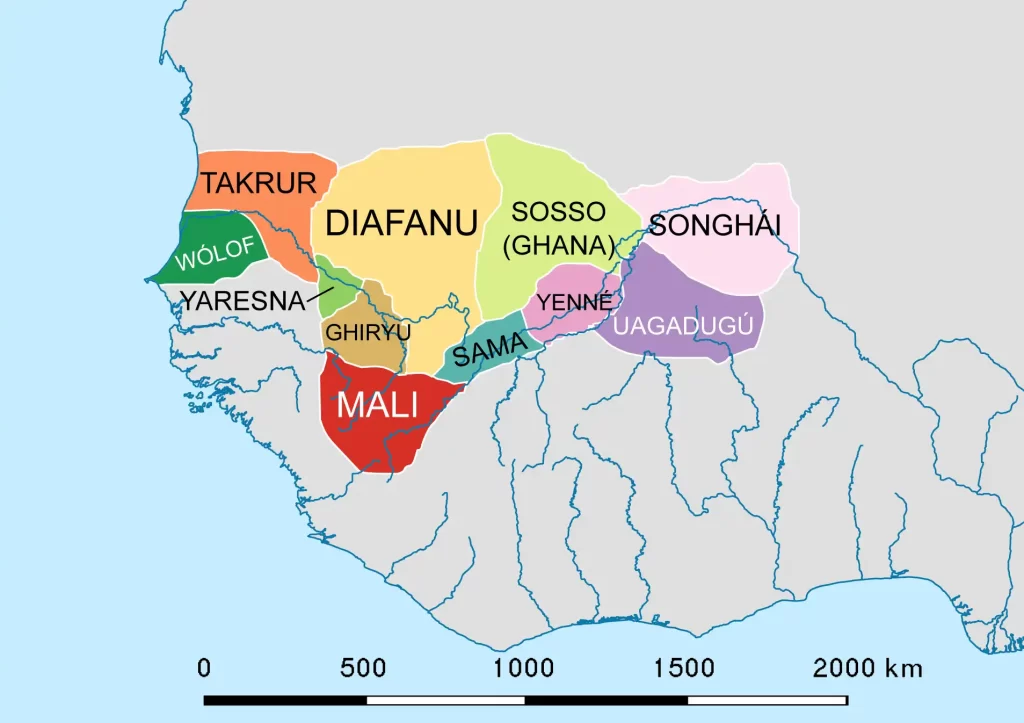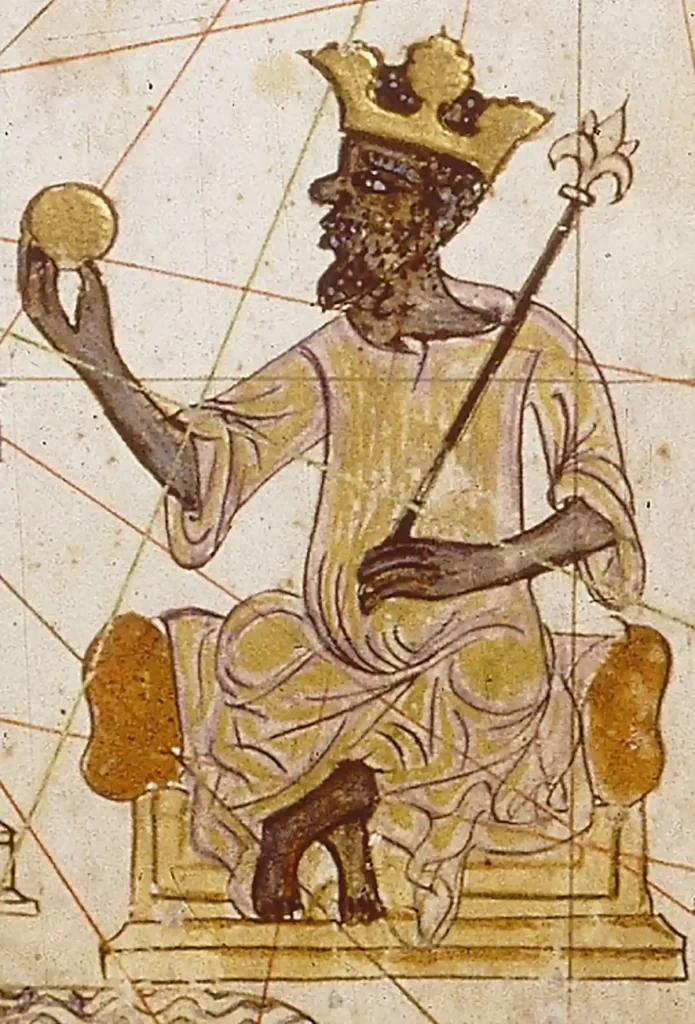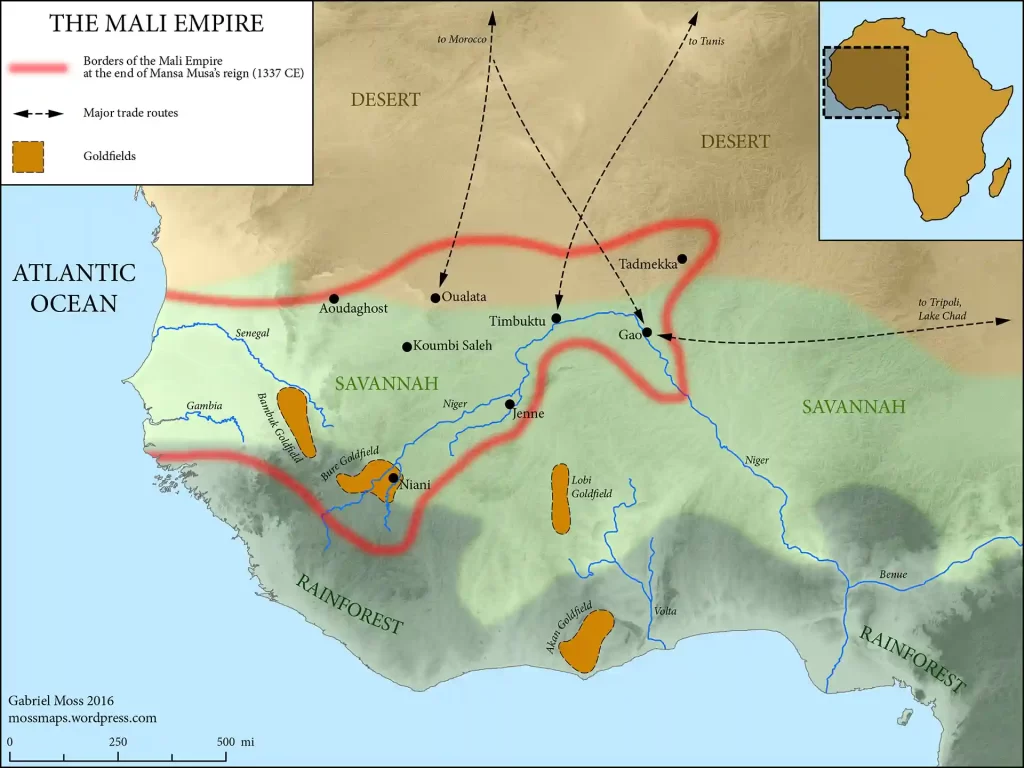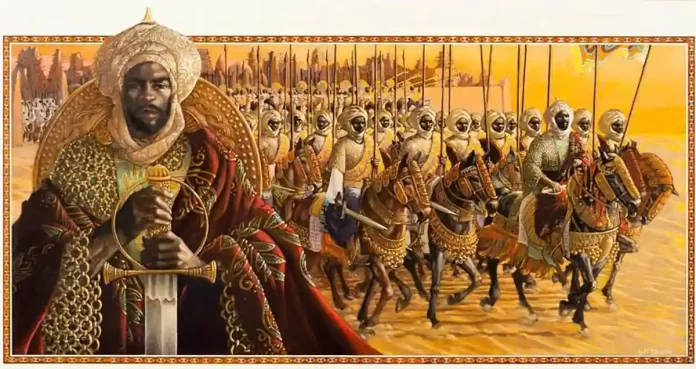The rise and fall of the Mali Empire – Latest Article on Culture Archive
The Mali Empire was founded by Sundiata in 1240 and quickly became the wealthiest kingdom in West Africa. Under Sundiata’s rule, the empire established a centralized government, diplomatic ties with other principalities, and a well-trained army. The wealth of the Mali Empire was built on its control of regional trade routes, serving as a middle trader between North Africa and the Niger River. Even greater heights of wealth and expansion of territory were gained under King Mansa Musa I, who reigned in the early 14th century.
The wealth of the Mali Empire developed through control of the regional trade routes as they served as a middle trader between North Africa and the Niger River in the south. Muslim merchants were drawn to the commercial activity, and with them came Islam, which spread to such noted cities as Timbuktu. Even though much of the rural population of Mali clung to their traditional animistic beliefs, the empire flourished until its collapse in the 1460s, caused by civil wars, internal struggles for the throne, the rise of rival empires, and the opening of new trade routes not under their control.
The Mali Empire developed in the Sudan region of West Africa, an area that had been occupied since the Neolithic period. Fertile land irrigated by the regularly flooding Niger River allowed for the development of agriculture around 3,500 years ago, and rice, millet, pulses, tubers, root crops, fiber plants, and fruits were all cultivated alongside the herding of cattle and fishing. Prior to the establishment of the Mali Empire in the region, the earlier political power was the Ghana Empire, which ruled from the 6th century to the 13th. The Ghana Empire, which had no relation to modern-day Ghana, flourished through wealth gained from trade and was supported by the military. Even so, it was in decline by the 12th century when it was taken over by the Kingdom of Sosso and its king, Soumaoro Kanté, who reigned around 1200.
Sundiata and the Establishment of Mali
In response to the Kingdom of Sosso establishing trade restrictions in the region, the Mandingo prince Sundiata waged war beginning in the 1230s. The prince allied himself with other disgruntled chiefs who were tired of Soumaoro Kanté’s harsh rule and eventually triumphed. Defeated the Sao in the battle at Krina. In 1235, in 1240, Sundiata captured the old Ghana capital and was declared the Supreme Monarch by the centralized government of tribal leaders, giving him the honorary title of Mari Diata or Lord Lion. Sundiata named his empire Mali, meaning the place where the king lives, and he also decreed that all future kings would hail from the Keita clan, though they didn’t necessarily have to be the eldest son of the king. This would become a problem for the stability of the empire in later years.

The Mansa, or king, was the supreme source of justice, but he was assisted by an assembly of elders, local chiefs, and legal advisers. During his rule, he would hold audiences in the royal palace or under a large tree and establish various positions such as Chief of the Army, Master of Ceremonies, and Master of the Granaries, which later became Master of the Treasury. The Mansa monopolized key trading routes, which led to the fabulous wealth of the royal treasury, especially since only the king was able to possess gold nuggets and traders had to make do with gold dust. The king presented himself as a mystical being of immense power and instituted policies to encourage this image. Slaves were loyal only to the king.
No one was able to be in the king’s presence while he ate, and visitors were to approach him barefoot, humbled, and pouring dust on their heads. King Sundiata amassed great wealth and continued to expand his territorial borders, which came to include the old kingdoms of Ghana, Wagadou, Temea, and Soninke. The city of Niani, which no longer exists today, was chosen to be the empire’s capital, as it was in an advantageous position, protected by mountains and close to key trading goods, sources, forests, and waterways.

Chiefs of acquired territories could continue to rule their own people, although with a Mali-appointed governor, and they had to give tribute to the Mali king. When foreigners visited the Mali territories, they regularly noted the high degree of justice as well as the people’s prosperity, evidenced by abundant food supplies and the confidence of safety the populace felt in traveling from place to place. The kingdom’s prime location and lucrative trade monopoly allowed the Mali Empire to prosper.
The river played an important role in access to Africa’s interior, and camel caravans controlled by the Berbers brought goods from across the Sahara Desert. With the taxation of goods passing through their territories, the purchase and resale of goods at higher prices, and access to their own natural resources, the Mali rulers had a triple income while also being in control of various gold-rich regions. Gold dust and salt were often traded pound-for-pound, and the precious material became more and more in demand.
With European powers who were minting coins from it in circa 1100, the city of Timbuktu was founded by the nomadic Tuareg people in an advantageous position on the Niger River bend and also at the starting position for the trans-Saharan caravans. The Mali Kings took over the city and made it into one of the most vital trade centres in Africa, where important goods like ivory, textiles, horses, weapons, sugar, and slaves were bought and sold. Transactions for goods were made either through barter or using an agreed-upon commodity for payment, like copper or gold ingots.
With this trade in commodities, of course, came the transmission of ideas. With Arab merchants figuring largely in transactions, it is no surprise that Islam was introduced to the region and became a prominent religion of West Africa. Reports by noted Muslim travellers Ibn Battuta and Ibn Khaldun claim that even the first Mali ruler, Sundiata, converted to Islam, but the oral traditions reject this and maintain Sundiata kept the ancient animistic religion.

Islam was firmly established and widespread, however, from the reign of Mansa Musa, who famously went to Mecca and brought back with him Muslim scholars, architects, and books. Mosques were built, and Quranic schools and universities were established, with educational programs including the wider topics of history, geography, astronomy, and medicine as well as religion. Many of the great libraries that were built at this time, holding tens of thousands of manuscripts and books, still survive.
After Sundiata, the Mali Empire seems to have been ruled by a string of lackluster rulers until its second golden age during the first half of the 13th century under Mansa Musa. Mansa Musa spent his reign not only maintaining the borders of the empire but also expanding them with his army of 100,000 men until his empire encompassed numerous religious, ethnic, and linguistic groups. Recognizing this diversity, Mansa Musa divided his empire into provinces, each with its own ruling governor who was in charge of local taxes, justice, and settling disputes. This improved governmental administration with better recordkeeping in the provinces as well as at the centralized offices at Niani. Mansa Musa and the elite became exceedingly rich with the increase in the exploitation of natural resources and the new trade routes under his control.
Even so, by the time of the 15th century, the Mali Empire was in decline. A primary cause for its fall was the rules for succession. With no clear-cut royal succession since the ruler didn’t have to be the eldest son of the reigning king, only a member of his clan, civil wars would erupt in fierce battles fought between brothers and uncles for the throne. In addition to the internal struggles for power, there was also the issue of lucrative trade routes opening up elsewhere. The swift movement of European ships of trade down the west coast and the growth of rival kingdoms, namely the Songhai. By the time the king of the Songhai Empire, Sunni Ali, conquered the Mali Empire around 1468, it had been reduced to a small western pocket of what was once a great and wealthy kingdom. By the 17th century, what was left of the Mali Empire was absorbed into the Moroccan Empire.
To read latest Article on Culture archive – Click here

